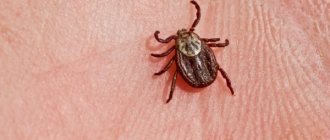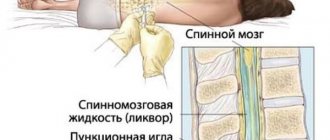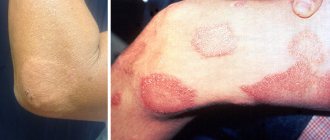When an infection enters the human body, inflammation of the regional lymph nodes occurs, which is accompanied by fever and intoxication, as well as the formation of a primary affect exactly in the place where the pathogen entered.
Cat scratch disease occurs and is diagnosed much more often in children than in adults. In medical practice, the possibility of transmitting this infection from a sick person to a healthy person has not been proven. The incidence rate remains stable throughout the year. A slightly larger surge is recorded in autumn and winter. This is due to the fact that rodents settle closer to human habitation.
Causes
The pathogenic bacterium enters the human body through skin scratched by animals, mucous membranes, and in rare cases through the conjunctiva, respiratory tract, and gastrointestinal tract.
After a few days, a dense papule appears on the damaged area, in some cases ulcerated and covered with a crust. From the site of damage, the bacterium enters the regional lymph nodes via lymphogenic pathways. Here, active reproduction of the pathogen occurs with the release of a toxin. As a result, adenitis develops - inflammation of the lymph nodes.
Without adequate therapy, a breakthrough of the lymphatic barrier is possible, which will lead to damage to the central nervous system, liver, spleen, and other organs and systems. Changes are detected in the lymph nodes, which lie in close proximity to the site of infection. Either one lymph node or a whole group of them may be affected.
Infected lymph nodes increase in size, they are moderately dense and fused to each other. At autopsy, dark red tissue is observed, homogeneous or interspersed with areas of necrosis and melting, which depends on the stage of the process. Over time, microabscesses can spread to the entire node, as well as the surrounding tissue. As a result, an inflammatory conglomerate is formed, which subsequently melts. In severe forms of the disease, the granulomatous process also occurs in other organs - the brain, lungs, liver, bones and other organs, which causes the development of such dangerous diseases as encephalitis, hepatitis, osteomyelitis, etc.
How and from whom do they get infected?
The bulk of Bartonella “lives” in the body of domestic and wild cats. The bacterium is transmitted to each other by cat fleas, in whose intestines the microbe lives for up to 9 days. These insects are not dangerous to humans.
According to statistics, almost half of cats have this pathogen in their blood, and the animals do not experience any symptoms of the disease, although they have been sick for several years. There is even an opinion that this bacterium normally inhabits the mouth of cats. They excrete the bacterium in their urine and saliva, from where it ends up on the cats' paws.
Therefore, you can become infected:
- when bitten by an animal;
- through damage from a cat's claw;
- through contact with saliva in the eye (on the conjunctiva) or on damaged skin;
- if the water/food that the cat drank came into contact with mucous membranes or injured skin;
- if there is an injection with a fishing hook, a splinter or thorns of plants on which the cat’s saliva has come into contact.
The most dangerous in terms of contagiousness are kittens that are not yet 1 year old. Adult cats are slightly less dangerous. But dogs, monkeys, and rodents can also become a source of infection. You can even become infected by pricking yourself with a hedgehog needle or a bird feather.
Usually affected:
- hands;
- skin of legs;
- head;
- face;
- neck;
- rarely - eyes.
A person cannot infect a person. And someone who has had felinosis once will not develop the disease again. 5% of people are immune to felinosis (of which 25% are owners of domestic cats).
Symptoms
The incubation period lasts from 10 to 30 days, less often – 2 months. Benign lymphoreticulosis, as the disease is also called, begins acutely. Symptoms of cat scratch disease: body temperature rises sharply to 38–39 ° C, mild malaise is observed, and an enlargement of a regional lymph node or group of lymph nodes occurs.
The most susceptible to infection are the lymph nodes in the armpits, neck, and, less commonly, the groin, thigh, and under the jaw.
Sometimes adenitis is localized in unusual places - in front of the auricle, under or above the collarbone.
The size of the affected lymph nodes reaches the size of a chicken egg, less often - an orange. They are inactive and painful to the touch. Cat scratch disease is recognized precisely by enlarged lymph nodes.
Adenitis at the initial stage of the disease is often the only symptom, but at the peak of the disease, most patients experience fever, muscle and headaches, and loss of appetite. In some cases, intestinal dysfunction and skin rashes resembling measles or scarlet fever occur. It is important that lymphadenitis appears much later than the primary affect, and the latter may be completely absent at the peak of the disease.
There are atypical forms of the disease - angiotic, glandular-ocular, abdominal, cerebral, pulmonary, etc. Clinical manifestations in such cases correspond to the lesion - encephalitis, pneumonia, tonsillitis, mesadenitis, etc.
The disease lasts for 3 or more months. In some cases, relapses occur with repeated suppuration.
About the causative agent of the disease
Felinosis is caused by a very unusual bacterium - Bartonella henselae. This is an intermediate form between a bacterium and a virus: in shape it does not differ from a bacterium and even has a flagellum; destroyed by antibiotics. But, like a virus, it lives inside a cell and is grown not on nutrient media, but on living cells. Its “cousins,” Rickettsia, are the causative agents of many diseases, including typhus, a pathology that appears in some people who have lice on their heads.
The name of the disease, felinosis, comes from the word “Felis,” which is the Latin name for cats. The “name” of the bacterium – Bartonella hensele – was given to it in honor of the microbiologist who discovered the microbe and described its properties, Diana Hensel.
Treatment
As part of the treatment of cat scratch disease, the patient receives mainly symptomatic treatment.
Uncomplicated forms of the disease are treated for 10–14 days with erythromycin (0.5 g 4 times a day), doxycyline (0.1 g 2 times a day), ciprofloxacin (0.5 g 2 times a day). Alternatively, tetracycline, azithromycin, ofloxacin, chloramphenicol can be used. However, these drugs do not always show their effectiveness.
Along with this, symptomatic medications, antihistamines, and vitamins are prescribed. Non-steroidal anti-inflammatory drugs – voltaren, indomethacin – can also be used.
Physiotherapy methods are used on the area of infected lymph nodes - diathermy, UHF. In particularly severe cases, a short course (up to 7 days) of corticosteroids is prescribed. In case of suppuration, pus is removed from the softened lymph node by incision or puncture.
With timely and adequate therapy, the treatment prognosis is favorable. There is a gradual recovery of the patient and sclerosis of the affected lymph node.
Diagnostics
An infectious disease specialist is involved in the treatment and diagnosis of felinosis. This specialist will distinguish cat scratch disease from wound suppuration by its appearance. So, if a cat scratches and the hand swells, this is most likely (although an inspection needs to be done) infection of the wound with ordinary (nonspecific) flora: strepto- or staphylococci, Proteas, maybe fungal flora. Such suppuration begins already on the second day after a scratch or bite, the site of injury is red, painful, a light liquid may be released from it, and later pus. With felinosis, the scratch heals, and against the background of a crust or even without it, nodules appear in this place that do not fester, do not hurt or itch.
“Bloating” of the hand after a bite or scratch is most likely a description of phlegmon (purulent melting of tissue) or, even worse, an anaerobic infection such as gas gangrene. Here you need urgent help from a surgeon, most likely with hospitalization.
If a person begins to be bothered by enlarged lymph nodes, a consultation with an infectious disease specialist is required. Best of all, not a doctor from a clinical hospital, but a doctor from the emergency department of an infectious diseases hospital. There is less chance of infecting other patients, because such manifestations, in the absence of nodules on the skin, must be distinguished from HIV infection, lymphogranulomatosis, infectious mononucleosis, as well as such dangerous diseases as plague and tularemia.
Having suspected felinosis based on the medical history (contact with a cat, the appearance of nodules), an infectious disease doctor will help confirm the diagnosis with the help of studies, for which he needs tissue material either from nodules, or from an abscess, or from a lymph node, for which the doctor must puncture the pathological element and take its contents for the following types of research:
- by polymerase chain reaction (PCR): this is how B.hanselae particles are detected and recognized. The analysis is performed by paid laboratories;
- histological: under a microscope, characteristic tissue changes, as well as bacteria, are visible.
Serological tests - the determination of antibodies to Bartonella - also help in diagnosis. To do this, reactions called either ELISA or RSK are performed.
At 3-4 weeks of illness, you can conduct a skin allergy test by injecting a solution with Bartonella particles under the skin: in 90% of people with felinosis, the response will be redness and swelling in this place. This study has not been conducted in children.
A general blood test, in which the number of eosinophils is increased and the ESR is accelerated, does not confirm the diagnosis, but allows us to draw a conclusion about the severity of the disease. Determination of liver tests will help to find out whether the liver function is affected and to what extent, and an ultrasound of the abdominal cavity will reveal an enlargement of the liver and/or spleen, which will give reason to adjust the regime to semi-bed (the spleen is a delicate organ, its capsule can be damaged by severe human activity).
Cat scratch disease in children
Felinosis in children usually occurs in a typical form: a scratch from a cat's claw goes away, and nodules appear in its place, which suppurate and open. After this, 1 or several nearby lymph nodes enlarge. The disease lasts about a month and can go away even without treatment.
An atypical form can develop in an HIV-infected child, a child who has undergone chemotherapy or organ transplantation. In this case, it is impossible to predict which organ or system will be affected. Symptoms of atypical forms in children correspond to those described above.
Diagnostics in children is the same; punctate PCR is its main method.
Treatment is carried out with the drug Sumamed at a dose of 10 mg/kg per day. From 8 years of age, doxycycline or tetracycline can be used. Drugs such as ciprofloxacin or ofloxacin are allowed from 16-18 years of age.
Clinical picture
Incubation period. It varies from 3 to 10 days, but in some cases it can last up to 1.5 months.
Initial period. At the site of a healed scratch or bite, a primary effect often occurs in the form of reddish papules, which do not cause significant concern to the patient and often go unnoticed.
High period. Later, papules can fester, ulcerate and become covered with crusts, after which no scars remain after rejection. 2-3 weeks after the onset of the primary effect, regional lymphadenitis develops, most often in the armpits and neck, less often in the groin and femoral areas. In 80% of cases, an enlargement of one lymph node is noted. Sometimes the lymph nodes acquire significant sizes; upon palpation they are slightly painful and dense. The phenomena of periadenitis are not observed. Symptoms of intoxication appear in the form of increased body temperature, malaise, headache, and decreased appetite. The duration of the temperature reaction with manifestations of intoxication varies from 1 to 3 weeks. In some cases, a polymorphic allergic rash on the skin, micropolylymphadenitis, and enlargement of the liver and spleen may occur.
The period of convalescence. It is characterized by the disappearance of signs of intoxication, gradual resorption, sclerosis or suppuration of the lymph nodes, followed by their opening.
Felinosis can also occur in atypical forms. One of them manifests itself in the form of unilateral conjunctivitis with the formation of ulcers and nodules on the conjunctiva and enlargement of the parotid and submandibular lymph nodes. In rare cases, neuroretinitis occurs, usually unilateral, manifested by swelling of the optic disc, the formation of star-shaped spots and nodules on the retina, and angiomatous changes under it. At the same time, visual acuity is completely preserved. In the presence of granulomatous changes in the liver, hepatic purpura develops.
Diet for lymphadenitis
Diet 15 table
- Efficacy: therapeutic effect after 2 weeks
- Timing: constantly
- Cost of food: 1600-1800 rubles per week
Table No. 15 is best suited - nutrition that does not require a therapeutic approach when creating a diet. At the same time, it is necessary to limit the consumption of fatty, spicy, salty and fried foods, and give up sweets and street food.
The diet should contain sufficient amounts of dairy products, seafood, vegetables and mushrooms, plant and animal protein.
Complications
Complications are extremely rare. Only a small percentage of patients develop severe systemic disease or other atypical manifestations. These may include oculoglandular syndrome, encephalitis, meningitis, neuroretinitis, pneumonia, osteomyelitis, erythema nodosum, arthralgia, arthritis and Werlhof's disease.
Epidemiology
The reservoir and source of infection are cats, and in some cases, dogs. Presumably, small rodents and monkeys may play a certain role in the spread of infection. The pathogen is not transmitted from person to person. The cats themselves remain healthy; It is believed that the pathogen is part of the normal microflora of the oral cavity of cats.
The transmission mechanism is contact. The pathogen penetrates through damaged skin (bites, scratches or microtraumas that existed before contact with the cat). Sometimes cat saliva gets on the conjunctiva of the eyes, which leads to the development of ocular forms of the disease.
The natural susceptibility of people has not been studied.
Basic epidemiological signs. The disease is common in all countries, but quite often remains unrecognized, so it is difficult to judge the true incidence rate. It is more commonly seen during the winter months; men get sick slightly more often than women. Among the sick, children predominate. Cases of morbidity among veterinary and laboratory workers have been described. Isolated familial outbreaks have been reported.
Atypical form
When infectious agents come into contact with the mucous membrane of the eye, there is a high risk of developing conjunctivitis. Symptoms in case of contact with skin:
- fever;
- the appearance of ulcers;
- suppuration of injuries;
- After healing, scars form.
This form of felinosis occurs in 10% of cases. It is usually diagnosed in children, as well as the elderly (people whose body reactivity is reduced). The duration of the disease is from 6 to 8 weeks.









